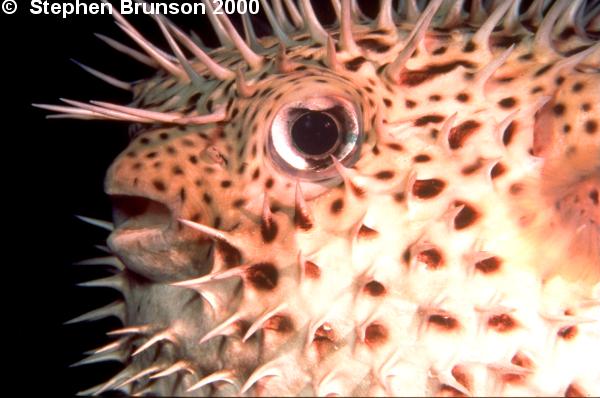








Porcupine Fish: Diodon hystrix
The porcupine fish, or Diodon hystrix is a member of the Diodontidae family of Puffers. They have one single tooth in each jaw; fused at the midline, they form a parrotlike beak. They are covered in evenly spacedn dark spots, which can be used to identify them from the other puffers; most burrfish do not have these spots. Though they appear quite deadly, their spines are not known to be poisonous, but they do make for a nice collectible. Unlike their smaller puffer cousins, the burrfish, whose spines are permanently erect all of the time, the Porcupine fish inflates itself by taking in tiny gulps of water until the stomach is full and expands the rest of the body.

Print Number - TF015
Limited Edition signed color photography for sale by Stephen Brunson
Porcupine Fish, Diodon hystrix Statistics:
Size: From 3 inches to 2 ft
Mating Habits: Not much is known about mating or juveniles
Diet: Crustaceans, Mollusks, and other animals that 'dig in' to the ocean floor. The porcupinefish hunts over the ocean floor at night, using tiny jets of water to uncover prey
Distribution: From Massachusetts to Brazil, including Bermuda, the Gulf of Mexico, the Caribbean, and in the Pacific from San Diego to Chile
Habit: Nocturnal
BrunsonImages@att.net


















